Classes
Below is a list of classes I have developed for teaching within the SCA. Many of these classes are meant to be taught in a classroom setting with a computer and may not be suitable to teach at all events, especially camping events where electricity is not readily available.
Most of my classes pertain to my astronomical research. I have broken that up into three categories. The general astronomy clases are easy, introductory courses that require no special knowledge or prerequisites. The Mathematical Astronomy Series are designed to be taught and taken in the order listed for best effect as many of the earlier topics are referenced in later classes. While the later classes are designed to have a light refresher taking the other classes beforehand will make them much more approachable. Lastly, the Astronomy Adjacent Series are ones that aren't directly in the Mathematical Astronomy Series, as they do not fit into the logical flow, but will benefit from taking some of the classes in the Mathematical Astronomy Series. For example, the Celestial Navigation class benefits from having taken the De Sphaera class.
Lastly, I have a section of non-astronomy classes which are easily approachable and also require no pre-requisite knowledge.
General
These classes were written to stand alone. While the material may relate to other classes, there is no prerequisite knowledge necessary to attend these classes as they do not build on each other.
A Brief History of Astronomy
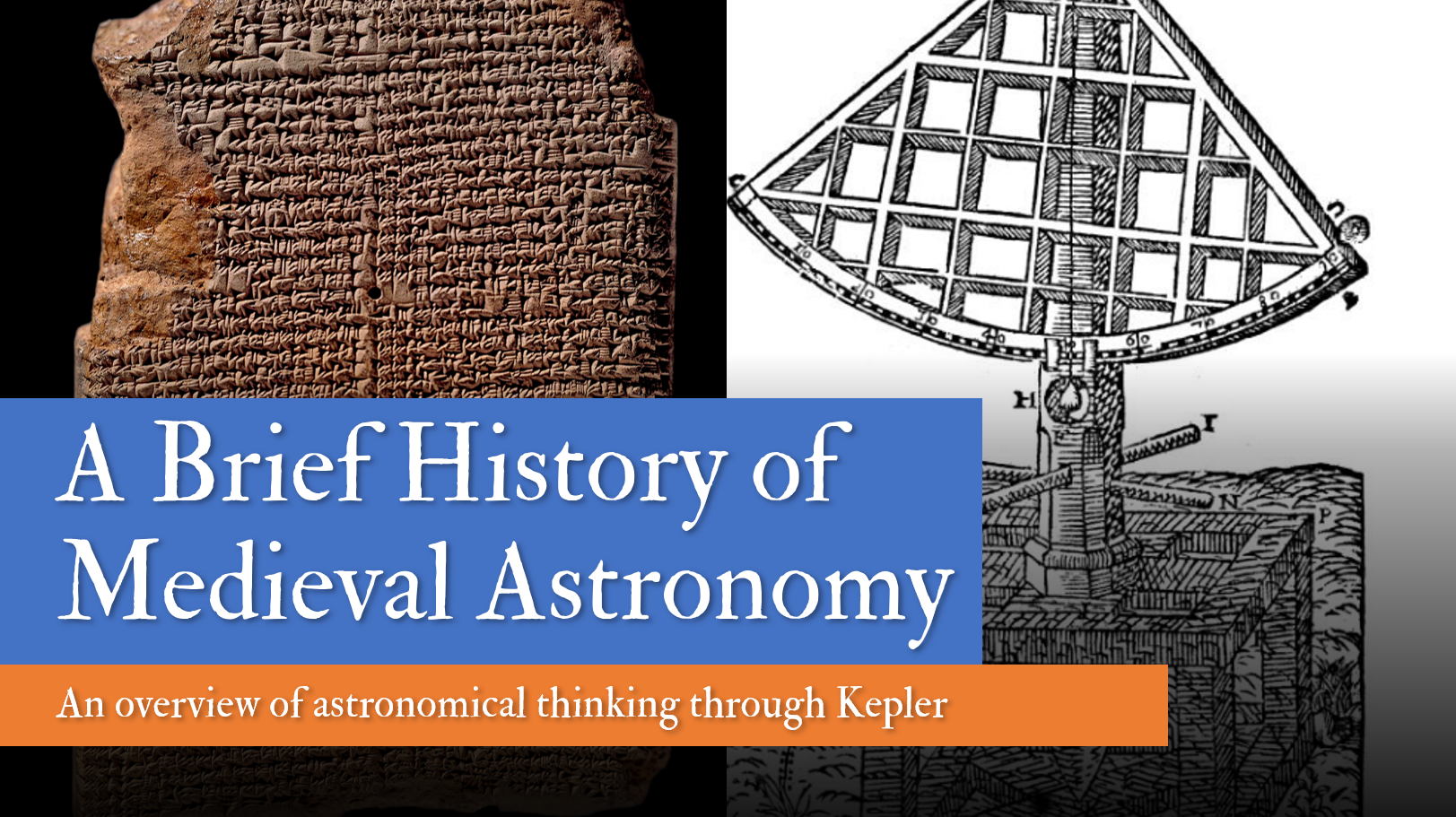 A common misconception in astronomical history is that, after the Greek astronomers developed the Geocentric model, the field of astronomy was virtually non-existent for over 1300 years until revitalized by Copernicus, Kepler, and Galieo at the beginning of the renaissance. In reality, an interest in astronomy remained throughout the entirety of period, although often lacking in sophistication in some regions.
A common misconception in astronomical history is that, after the Greek astronomers developed the Geocentric model, the field of astronomy was virtually non-existent for over 1300 years until revitalized by Copernicus, Kepler, and Galieo at the beginning of the renaissance. In reality, an interest in astronomy remained throughout the entirety of period, although often lacking in sophistication in some regions.
This class gives a broad overview of astronomical history starting with the Babylonians, going through the Greek era, the Islamic golden age, the Christian west, and ending with the developments of the renaissance.
Format: Lecture
Duration: ~1 hour
Accommodations Required: Electricity, reasonably dark room for projector
Christianity & Astronomy in the Medieval Period
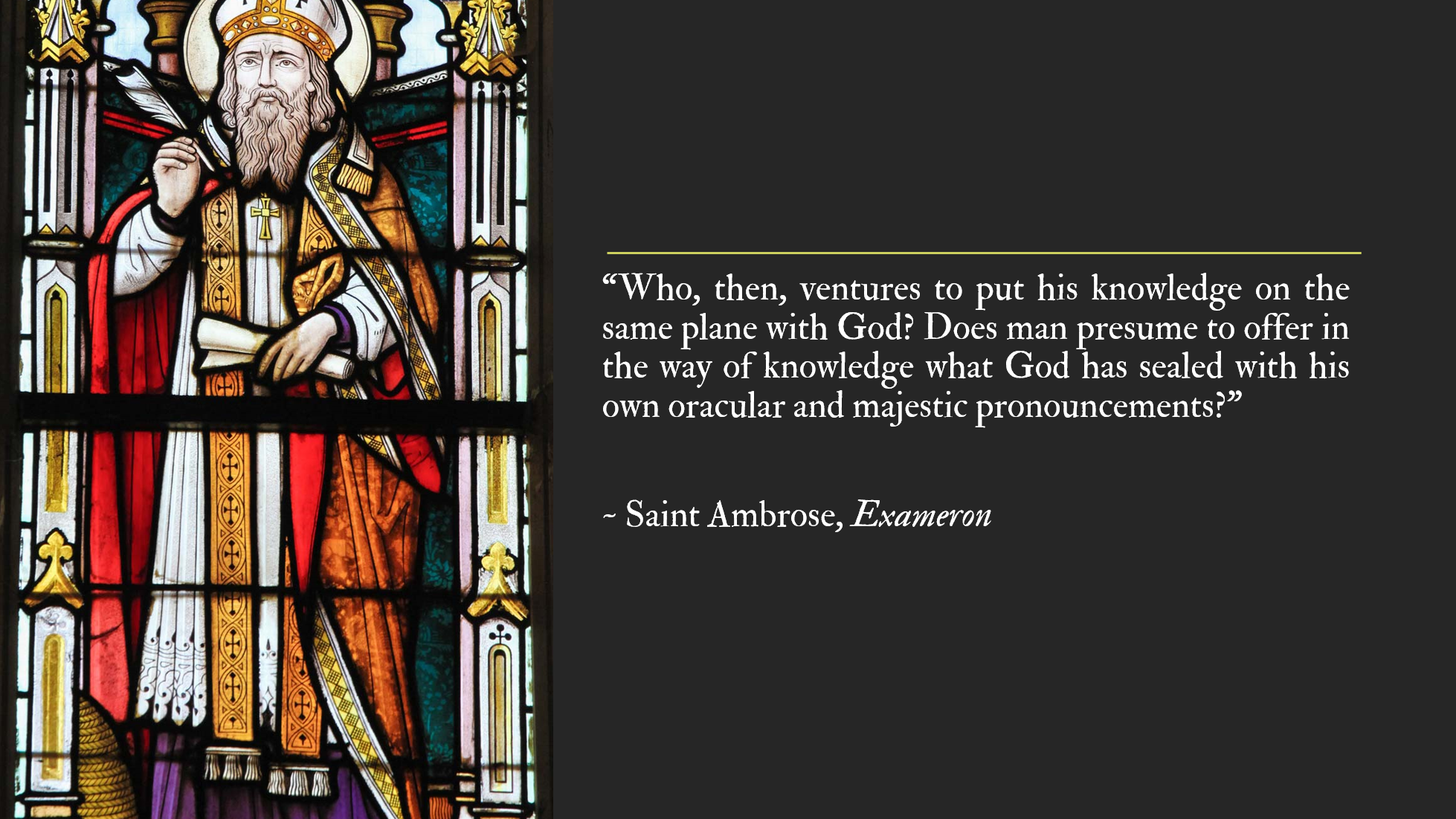 In popular media, Christianity is often portrayed as antithetical to science with the persecution of Galileo Galilei and Giordano Bruno as well as the banning of Copernicus', Kepler's, and Galileo's works being banend, given as example. Religious apologists often counter that religion in general and Christianity in particular was the impetus for astronomical investigation, frequently citing the exact same authors.
In popular media, Christianity is often portrayed as antithetical to science with the persecution of Galileo Galilei and Giordano Bruno as well as the banning of Copernicus', Kepler's, and Galileo's works being banend, given as example. Religious apologists often counter that religion in general and Christianity in particular was the impetus for astronomical investigation, frequently citing the exact same authors.
As with many things, the reality of the relationship between Christianity and astronomy is far more complex. This talk looks at commentary on astronomy by Christian leaders throughout period, examining where they supported astronomy and where they condemned it.
Format: Lecture
Duration: ~1 hour
Accommodations Required: Electricity, reasonably dark room for projector
The Mathematical Astronomy Series
This series of classes is designed to be taken in the order given below as an extended course in understanding mathematical astronomy. The early classes are general and do not require much, if any, prerequisite knowledge. They explore fundamental astronomy knowledge and terminology. The series then seeks to develop a mathematical toolbox necessary for mathematical astronomy before engaging with the Almagest's mathematical models.
Movement of the Heavens
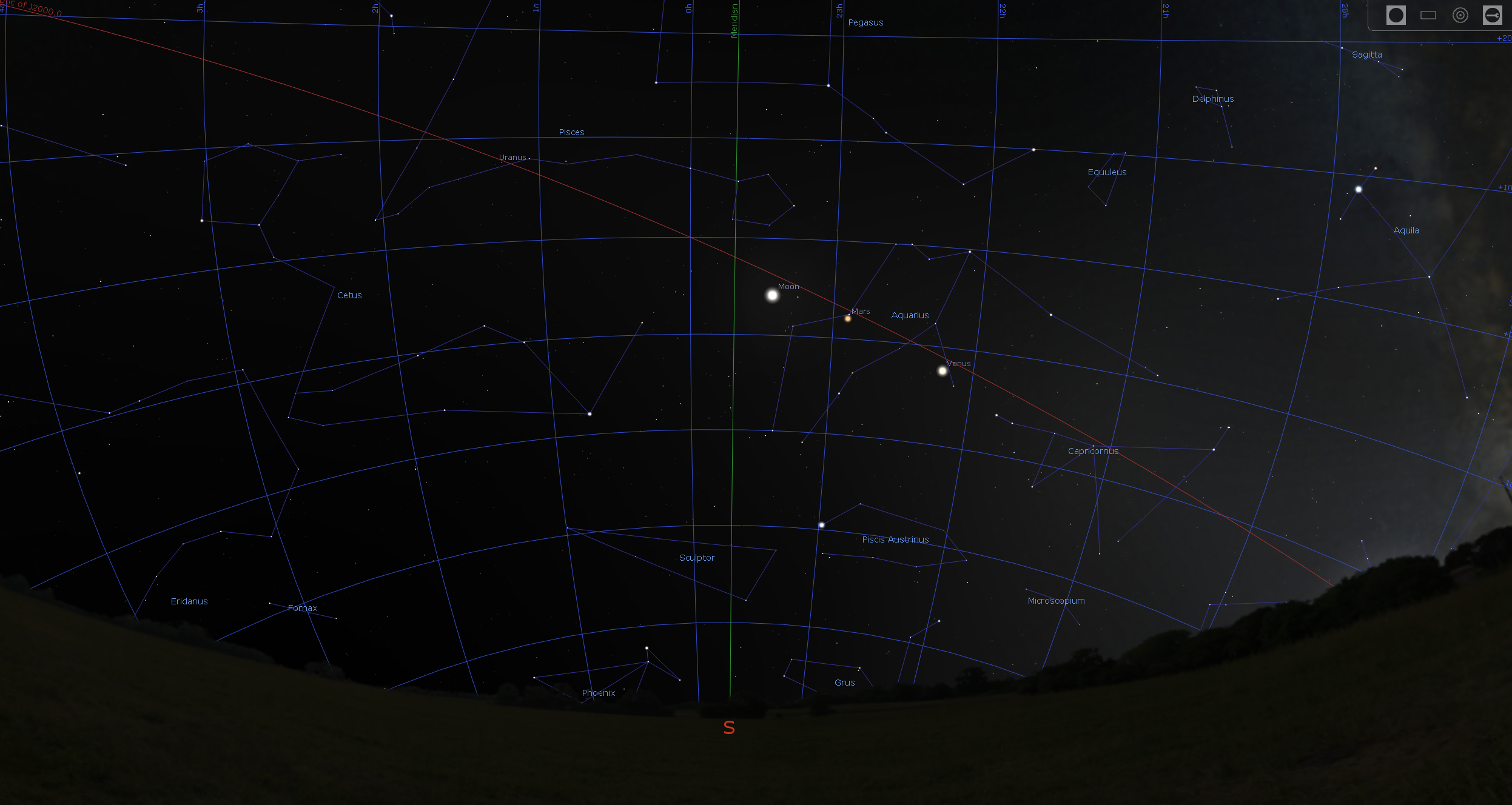 The main goal of astronomers like Copernicus and Kepler was to develop mathematical models of the motions of the heavens and predict where any object should be on a given date. These motions frequently have a great deal of subtlety with which casual astronomical observers would not be familiar.
The main goal of astronomers like Copernicus and Kepler was to develop mathematical models of the motions of the heavens and predict where any object should be on a given date. These motions frequently have a great deal of subtlety with which casual astronomical observers would not be familiar.
This class uses a free planetarium software, Stellarium, to compress several years of observations into a single class to highlight the motions that any astronomical model would need to explain and doubles as a beginning course into basic observational astronomy.
Format: Lecture with audience participation encouraged
Duration: ~1.5 hours
Accommodations Required: Electricity, reasonably dark room for projector
De Sphaera
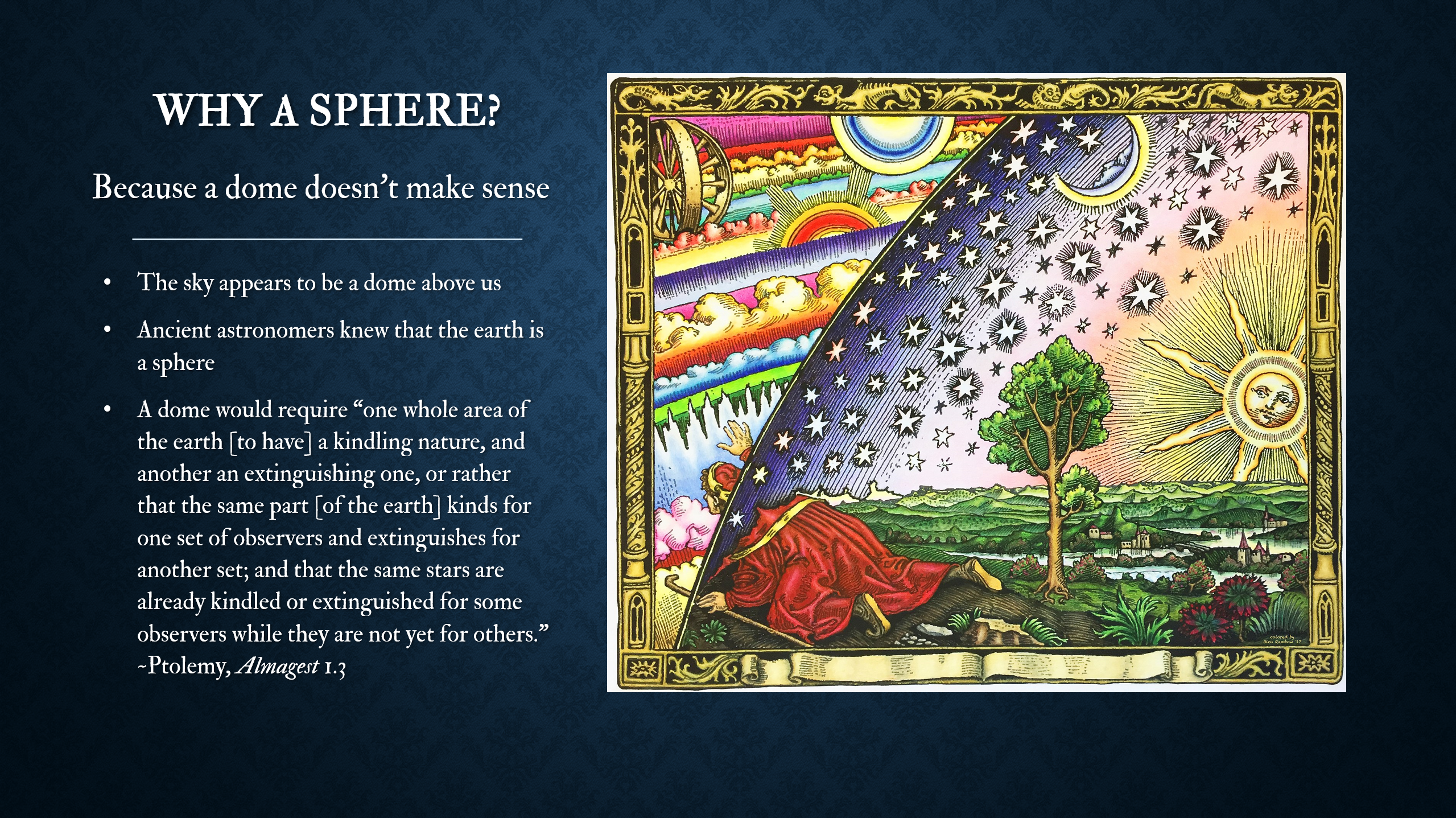 In the previous class, we examined the night sky from the point of view of an observer on earth. While the most natural vantage point, it is generally difficult to describe the position of objects because the sky is constantly in motion and the effects of latitude and longitude change the observer's view.
In the previous class, we examined the night sky from the point of view of an observer on earth. While the most natural vantage point, it is generally difficult to describe the position of objects because the sky is constantly in motion and the effects of latitude and longitude change the observer's view.
As such, astronomers frequently consider a view of the heavens outside of the apparent sphere of the sky. This concept is known as the celestial sphere. While it provides a simpler view in which stars have fixed coordinates, this concept still needs exploration as it is often difficult to visualize the relationship between this sphere and the view on earth. In addition, this class introduces concepts and designs that will be necessary for mathematical exploration in subsequent courses as spherical geometry is a distinct mathematical field with which few people have experience.
Format: Lecture
Duration: ~40 minutes
Accommodations Required: Electricity, reasonably dark room for projector
Mathematics of the Almagest
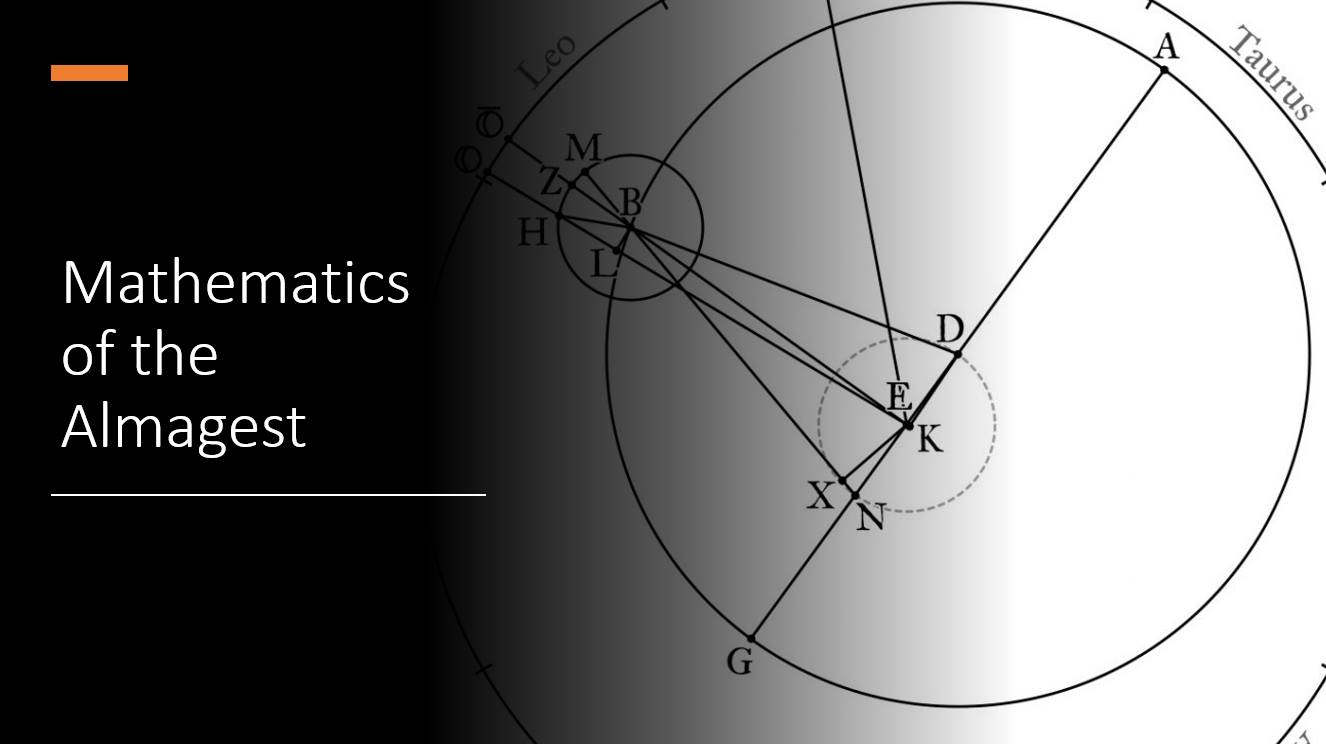 One of the most remarkable things about the Almagest is that the entire work was written before many mathematical techniques we consider rather basic were invented. Trigonometry as we know it (with sin, cos, tan) would not be develped until several hundred years after Ptolemy's death. But while the mathematical tools are ultimately quite simple, they are also unfamiliar to most people who would seek to understand this work.
One of the most remarkable things about the Almagest is that the entire work was written before many mathematical techniques we consider rather basic were invented. Trigonometry as we know it (with sin, cos, tan) would not be develped until several hundred years after Ptolemy's death. But while the mathematical tools are ultimately quite simple, they are also unfamiliar to most people who would seek to understand this work.
This class seeks to bridge that gap, introducing the most important mathematical techniques the Ptolmey uses through the Almagest. This includes the sexagesimal number system, the use of chords and circles to solve right triangles, and Menelaus' theorem. The class will also review concepts that are still taught in modern math class that appear as well including important theorems and similar triangles.
Format: Lecture with audience participation encouraged
Duration: ~1 hour
Accommodations Required: Electricity, reasonably dark room for projector
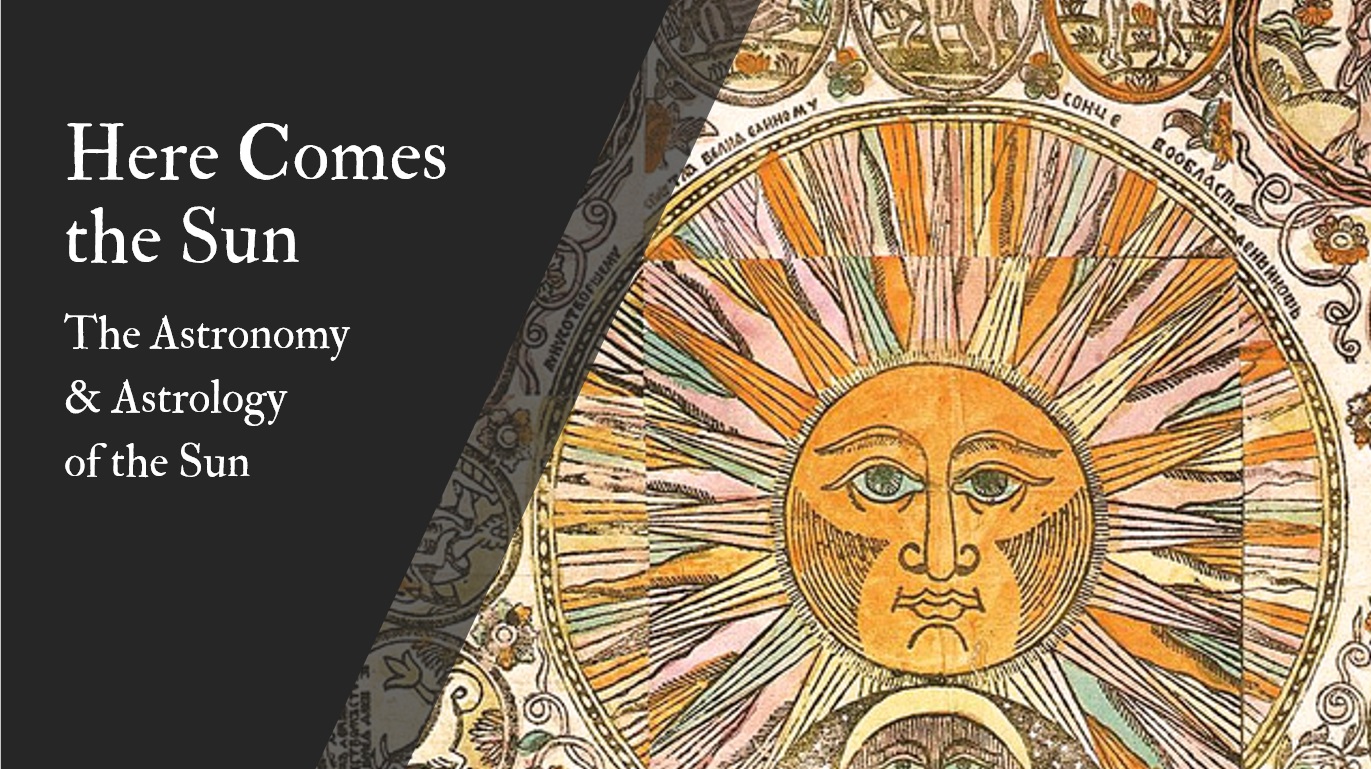 This class explores the usage of the Ptolemaic solar model. While rooted in Ptolemy's methods, errors in his parameters and a model that is ultimately incorrect means that it is useless 2,000 years later. To address this, the model has been rederived from first principles so that it works in present day.
This class explores the usage of the Ptolemaic solar model. While rooted in Ptolemy's methods, errors in his parameters and a model that is ultimately incorrect means that it is useless 2,000 years later. To address this, the model has been rederived from first principles so that it works in present day.
The class walks through a qualitative description of the model to highlight the concepts before diving into a qualitative example of its use.
When available, this class is taught in cooperation with Pádraigín AnEinigh who also includes the astrological implications of the solar poition.
Format: Lecture
Duration: ~1 hour
Accommodations Required: None
Astronomy Adjacent Classes
Celestial Navigation
This class explores how the concepts from the celestial sphere were used in period for navigation. It is based on the 16th century Arte of Navigation by Martin Cortes and includes a hands-on use of instruments. When taught at Lilies War, a practicum portion is taught on the Fyrdraka at night.
Format: Lecture
Duration: ~1 hour
Accommodations Required: None
Recommended Prerequisites: De Sphaera
Non-Astronomy Classes
The History of Calontir Through Song
In the days of legend and old, Calontir was once a part of the Midrealm. As Calontir broke away, one of the ways it did so was by forming a distinct bardic tradition that lasts to this day.
This talk celebrates that history and the people who helped make it through songs that define it and tell of the heroes who dwell in our history. Handouts are provided so everyone can sing along!
Format: Lecture with audience participation encouraged
Duration: ~1 hour
Accommodations Required: Electricity, reasonably dark room for projector